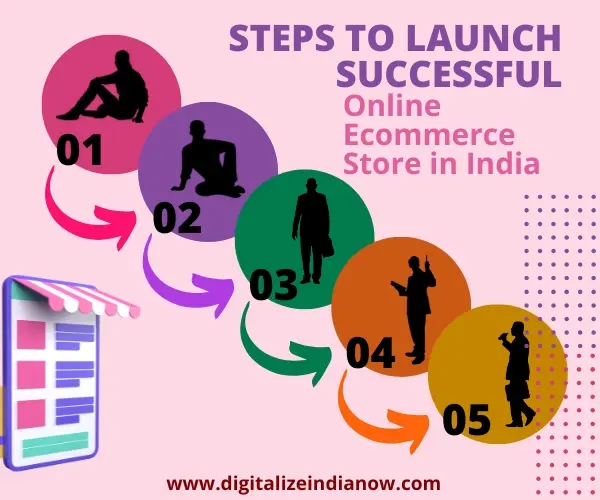Steps to Launch a Successful Online Ecommerce Store in India
The digital revolution has reshaped how Indians shop, making ecommerce a lucrative and vibrant industry. With rising internet accessibility and smartphone adoption, starting an online ecommerce store in India is more promising than ever. Here’s a step-by-step guide to help you navigate this journey and build a thriving business.
1. Understand the Market and Define Your Target Audience
India’s diverse demographics and consumer preferences require careful research to identify your niche.
Market Research:
- Analyze trending categories like fashion, electronics, and groceries.
- Study competitors’ strategies in pricing, marketing, and product selection.
- Conduct surveys to gauge consumer expectations.
Target Audience Segmentation:
- Based on age (Gen Z, Millennials, etc.), location (urban/rural), and spending habits.
- Tailor your offerings to suit their preferences.
2. Choose a Niche and Products
Success depends on focusing on a niche rather than catering to a broad market.
Steps to Select a Niche:
- Align passion with profitability.
- Target niches with high demand but manageable competition.
- Decide on sourcing strategies: manufacture, resell, or dropshipping.
Popular Categories in India:
- Apparel and accessories
- Home essentials
- Beauty and wellness products
- Local handicrafts
3. Register Your Business and Fulfill Legal Requirements
Establishing a legally compliant business builds trust with customers and partners.
- Essential Steps:
- Choose a business structure: sole proprietorship, partnership, or private limited company.
- Register for GST and acquire a PAN card.
- Secure trademark protection for your brand.
4. Build Your Ecommerce Platform
Your website is the backbone of your ecommerce store.
Platform Options:
- Use ready-made platforms like Shopify, WooCommerce, or Magento, or build a custom site.
Must-Have Features:
- User-friendly navigation and mobile optimization.
- Secure payment gateways.
- Product filters, reviews, and live chat support.
5. Source Reliable Vendors and Manage Inventory
Quality products and timely deliveries are key to customer satisfaction.
Vendor Sourcing:
- Use platforms like IndiaMART or Alibaba.
- Attend trade fairs for local suppliers.
Inventory Management:
- Use tools like Zoho Inventory or Unicommerce to streamline stock control.
6. Focus on Marketing and Branding
A strong brand identity and smart marketing differentiate your store from competitors.
Branding Essentials:
- Create a professional logo and brand story to connect with customers.
Marketing Strategies:
- Social media and influencer marketing.
- Search Engine Optimization (SEO) for improved visibility.
- Email campaigns for customer engagement.
7. Set Up Secure Payment Gateways
Ensure smooth transactions by integrating multiple payment methods.
- Popular Options in India:
- UPI apps like Google Pay and PhonePe.
- Credit/debit cards and net banking.
- Cash on delivery for broader accessibility.
8. Establish Reliable Logistics and Shipping Solutions
Fast, cost-effective delivery options build trust and repeat business.
Logistics Partners:
- Collaborate with providers like Delhivery, Blue Dart, or India Post.
Shipping Features:
- Offer free shipping for large orders.
- Implement easy return and refund policies.
9. Analyze Data and Optimize Continuously
Track performance to refine your strategies.
Key Metrics:
- Website traffic, conversion rates, and average order value.
- Customer acquisition cost and lifetime value.
Tools:
- Use Google Analytics for insights and SEMrush for SEO optimization.
10. Deliver Exceptional Customer Service
Satisfied customers are the backbone of your business growth.
- Support Strategies:
- Offer 24/7 assistance via chatbots or helplines.
- Proactively update customers on order statuses.
- Resolve queries promptly to build loyalty.
Conclusion
Launching an online ecommerce store in India involves meticulous planning, consistent improvement, and customer-centric approaches. By choosing the right niche, ensuring legal compliance, and leveraging the latest technologies, you can create a lasting presence in this dynamic market.
Start your ecommerce journey today and transform your vision into a successful reality!
